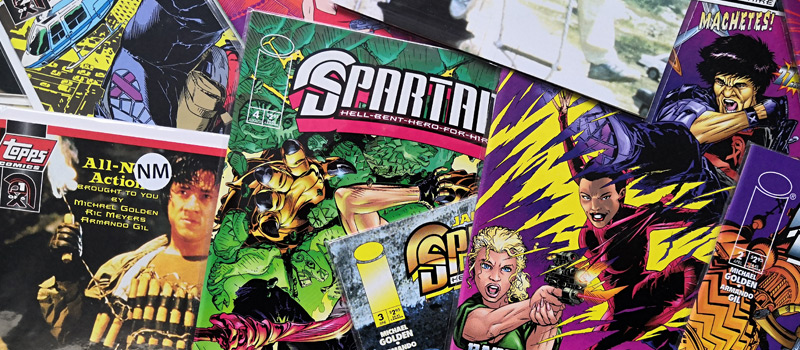
Jackie Chan’s Spartan X: Official 90s US comic series about Jackie Chan – an overview
Jackie Chan’s breakthrough in Hollywood is often associated with “Rush Hour” (1998). Ultimately, it is the decisive film, but this success was paved over the years. With the third attempt to conquer Hollywood he wanted to get it right and advertise the Jackie Chan brand extensively.
When Jackie Chan released his third Police Story film in 1992, he not only landed another success for his studio Golden Harvest, but also set new technical standards in Hong Kong action cinema. So far, most action films have been shot without the original sound, so that they were later dubbed in the studio. This was cheaper and common in Hong Kong until the early 1990s.
Where you first heard Jackie’s real voice in a Chinese film in Hong Kong and throughout Asia in 1992, a few cineasts, film critics and editors sat together in the USA and worked on a slightly different Jackie Chan project: a comic. The initiator of this was Renée Witterstaetter, who travelled to Hong Kong on good luck and wanted to convince Willie Chan of her idea.
What followed was an odyssey from film set to film set, always at the side of Jackie Chan, who invited her to go with her to locations of “Drunken Master 2”, “Police Story 3: Supercop” and “Crime Story”. Renée Witterstaetter quickly became part of the film crew, and Jackie even trusted her so much that he put her in a scene in “Crime Story”:
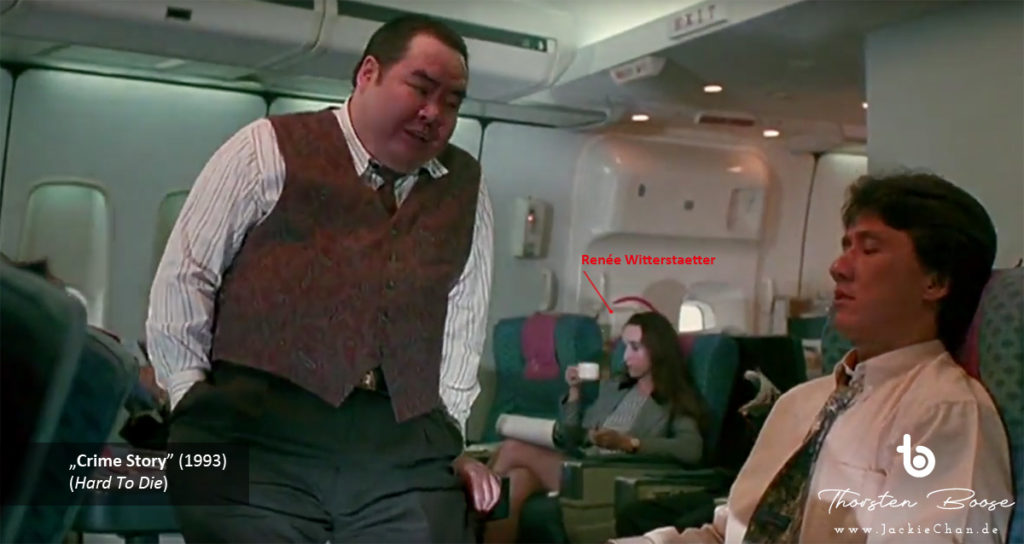
You can read more about her travels through Asia to bring the “Spartan X” comics to life from Renée Witterstaetter herself in the old Screen Power issues from #1.3 on, the official fan magazine of Jackie Chan.
Creators of the “Jackie Chan’s Spartan X” comics
The idea of a Jackie Chan comic was born early. It came about because fans of the actor could find themselves in almost all artistic fields, even back then, and they would like to honor their idol with their own project. At that time, the following artists participated in this project:
Michael Golden, born in 1945, is an American comic book artist who has made a name for himself in the industry since the 1970s. His favourite works include the “Micronauts” miniseries, Marvel comics like “She-Hulk” and “Doctor Strange”. Golden also drew various comics for DC, such as the “Batman” comics, popular in the 1980s.
Ric Meyers, born in 1953, is an American author, ghostwriter and film critic, who, although active since 1974, has only been involved with Hong Kong cinema since 1978 and is now considered one of the pioneers of western Eastern cinema fans.
Renée Witterstaetter is an American comic book colourist, editor and producer and has worked for DC, Marvel, Topps and others in her long-lasting career. Her book “Dying for Action: The Life and Films of Jackie Chan” is considered a must-have among fans.
Deal: Jackie Chan’s first official comic coming from the USA
In addition to the main actors around a concept of a universally applicable Jackie Chan comic, there were of course other personalities from the comic world. And while they were all discussing the first drafts and planning a distribution, Jackie Chan shot “Rumble In The Bronx” in Vancouver in 1994, with which he set another milestone. For the first time, English was spoken in an international Hong Kong action film and it was even shot overseas.
Jackie and his partner Willie Chan had planned the takeover of the West for a long time, and they took it step by step. The first fan clubs in Great Britain already existed in the late 1980s, the USA followed in the early 1990s. Even France, Germany and Spain followed suit with smaller fan meetings. The Jackie Chan brand slowly became known and promoted all over the world. The film studios New Line Cinema and Miramax bought up some rights to contemporary Jackie Chan films in the mid-1990s, adapted the soundtrack for a US audience and presented these films to the US for the first time in 1996, paving the way for an emerging Hollywood film.
When Ric Meyers and his team officially approached Jackie Chan’s office with their finished concept for a comic miniseries, they hit the pulse of the times. The timing was perfect, so Jackie and his partner Willie Chan agreed to the first American comic series about Jackie Chan. However, the condition was that the JC Group retained decision-making power. The joint company “Jackie & Willie Productions” is therefore officially under the copyright notice.
Start of the Jackie Chan comic at Topps
The deal was perfect, the concept and the artwork were in place. Now, it was time to work it out. While Jackie Chan was shooting “Who Am I?” in South Africa in 1997, the Topps Comics publisher reported that they would publish the first miniseries over six issues. Under the title “Jackie Chan’s Spartan X: The Armour Of Heaven”, which was a trademark at the same time, the following editions were distributed over the course of months.
Note: All comic book pages are coloured. There are 32 pages per issue.
The content is not spoiled at this point, so it can only be revealed that the character Jackie – often only derived as Spartan X from the fictional group of the same name – is supposed to get the armour of the sky for a client. The plot is reminiscent of the film series “Armour Of God”, but Renée Witterstaetter repeatedly emphasizes in her responses to letters to the editor that the comic mini-series is not a film adaptation, but rather mixes new elements with well-known eastereggs.
According to the editor, they agreed on a monthly publication cycle for the first three issues and a bimonthly for issues four to six. The only difference between the present variant editions is the photo cover. Issues 1 and 2 of the variants show scenes from “Armour Of God” (1986), while issue 3 shows a scene from “Armour Of God II – Operation Condor” (1991).
The missing editions of Topps Comics
But wait! Wasn’t the American comic team planning six issues of “Jackie Chan’s Spartan X: The Armour Of Heaven”? Yes, this is exactly what you will find printed in the top left corner of every comic issue in this series. But only three editions with their variants have been published.
In the 1990s, the US comic book market experienced a real inflationary boom. Especially at Topps Comics, which specialized in comics from the film and television sector, they worked with many publishers and artists who threw small series on the market and were forgotten again. This ultimately led to the end of Topps Comics in 1998.
But the “Spartan X” comic book team did not want to admit defeat.
Re-launch of the Jackie Chan comics at Image
You have to be aware of the shame: A team has been planning the first comic about and with Jackie Chan for years, receives official approval for it, advertises the mini-series in all well-known fan clubs – and then the eagerly awaited series becomes precise broken off in the middle.
The hearts of artists and fans are bleeding. That was also the reason why Renée Witterstaetter took the helm and dared a new approach for their “Spartan X” series with Ric Meyers and Michael Golden. At the beginning of 1998, a new film was made, which was advertised under the title “Rush Hour”. A buddy comedy with Jackie Chan and Chris Tucker. And this is exactly where the new marketing sets in.
The concept of “Jackie Chan’s Spartan X” was transferred to the competitor Image Comics after Topps Comics went bankrupt. Renée Wittersteatter also acted as the producer of the series under her label Eva Ink. The new title of the comic series was “Jackie Chan’s Spartan X: Hell-Bent-Hero-For-Hire” and these issues were produced.
Note: All pages are in black and white. There are 32 pages per issue.
In terms of content, the first three issues are a 1:1 copy of the editions already published by Topps Comics. But the issues at Image Comics are all uncoloured. This is probably the biggest difference to the original series, which underlined the story in beautiful bright colours; besides a few changes to the editorial part.
A nice addition, however, is the glimpse behind the scenes, as the artists call it. At the end of each comic booklet, the drawing process and earlier, discarded artwork by Michael Golden is presented with explanations on several pages.
The missing editions of Image Comics
Was the first US comic about and with Jackie Chan cursed? You’d think so, because the Spartan X team’s second attempt also failed after only four issues – the last two issues of the miniseries were already planned, maybe even drawn, but they were never published.
There is also a special feature in the series “Jackie Chan’s Spartan X: Hell-Bent-Hero-For-Hire”. Variant covers with film photos from Jackie Chan’s blockbusters were also produced for this. Only issues 1 and 4 were either impossible to find, strictly limited or not even printed.
The end of the first US Jackie Chan comic book series
Unfortunately, that was the end of the first comic book miniseries about Jackie Chan, which was officially co-produced by his company Jackie & Willie Productions. From time to time, copies can still be found on internet sales platforms, including surprisingly well-preserved ones. But the creators had much bigger plans than just a series of comics in the USA.
According to Renée Witterstaetter, after a successful start in the USA, they wanted to sell the concept worldwide; to Asia and Europe. In addition, work on action figures for the comic series was already underway in 1998. Each character should get a figure, plus an alternative one. The editor was in talks with the toy manufacturer Diamond Distribution, who had already designed some dummies for her. The market launch was expected in spring 1999.
But that was not all. Where Topps Comics originally adapted comic books from TV series and films, the “Spartan X” team wanted their comics back on television. It’s amazing, but the plan was to produce an animated children’s series for US television. This would have been Jackie Chan’s first television series – but history teaches us that this really happened only a short time later with “Jackie Chan Adventures” (2000-2005).
There will be more information in my new book “The new German Jackie Chan film guide”!

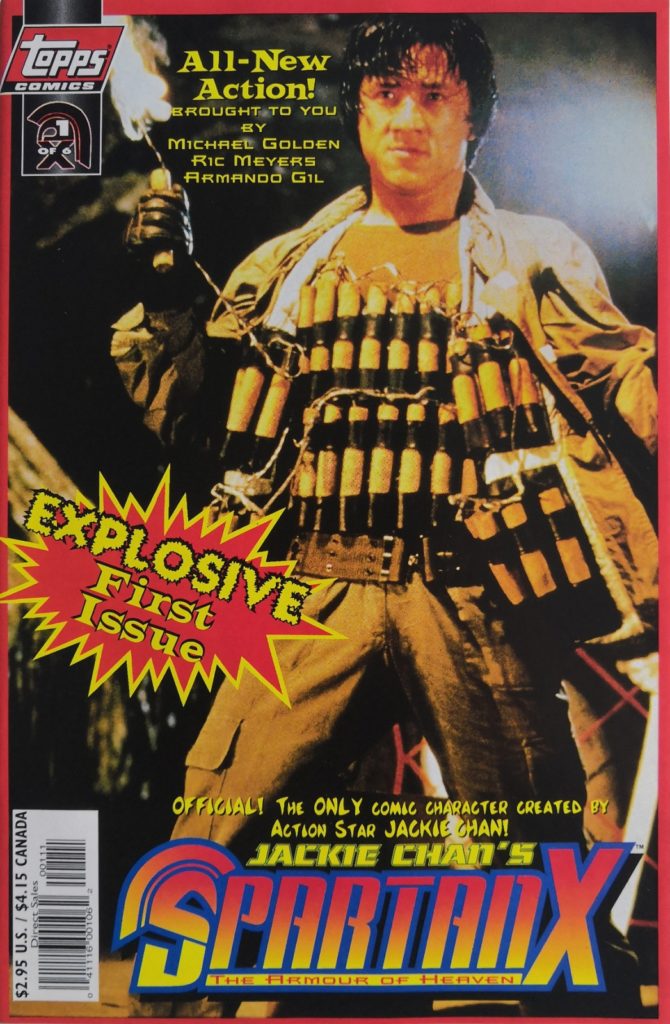
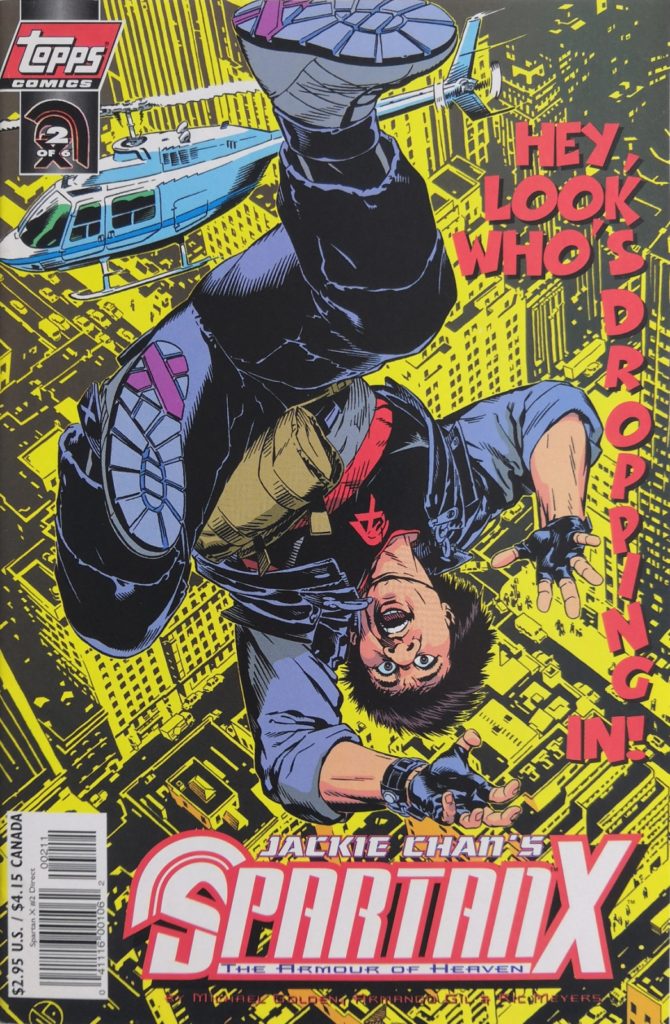
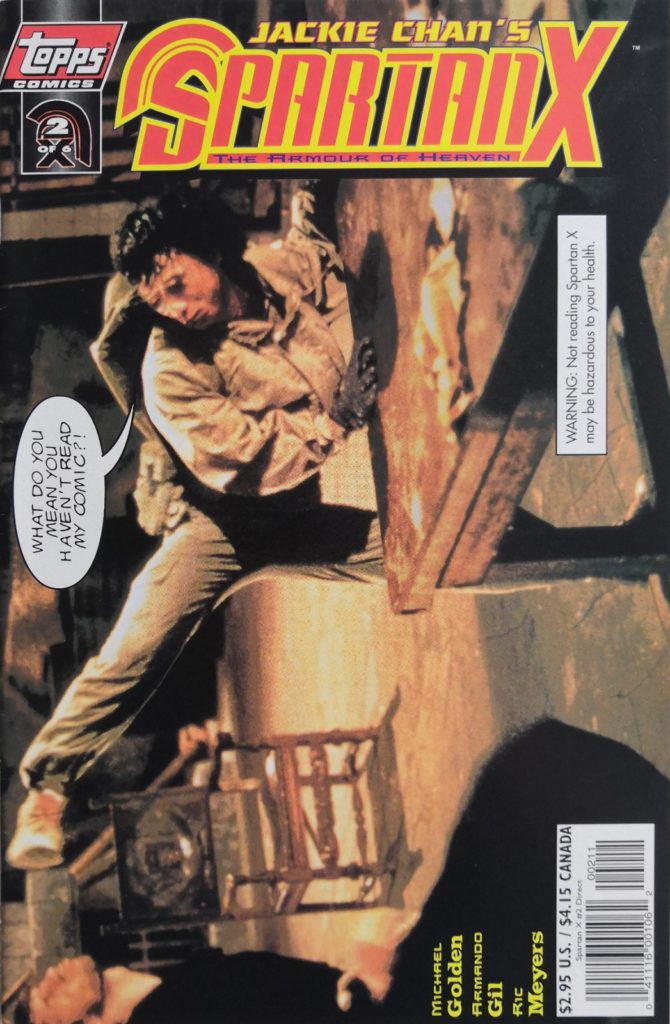

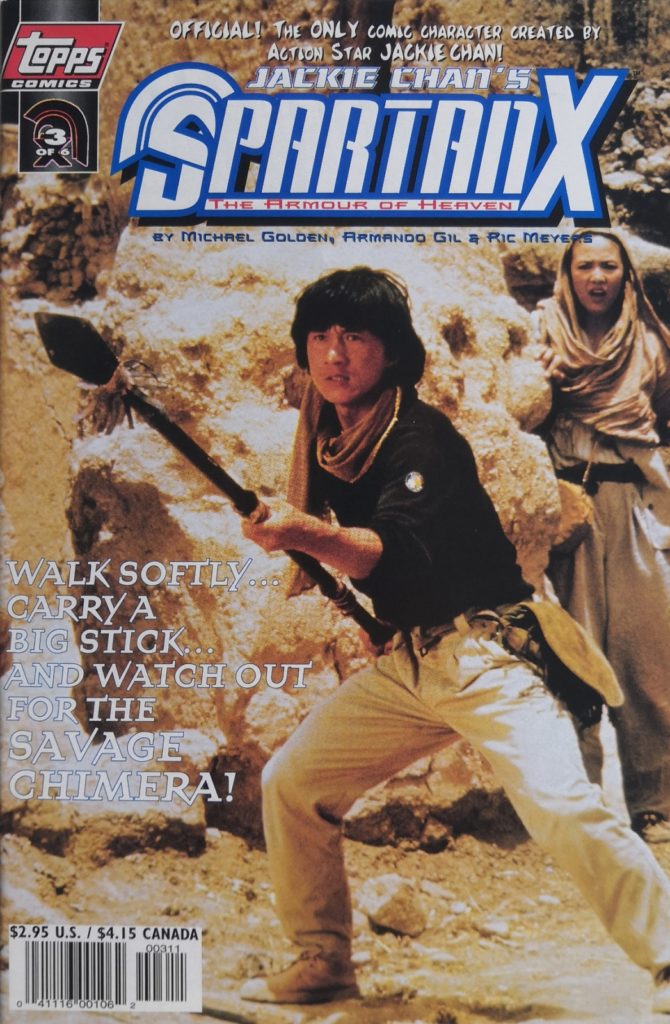
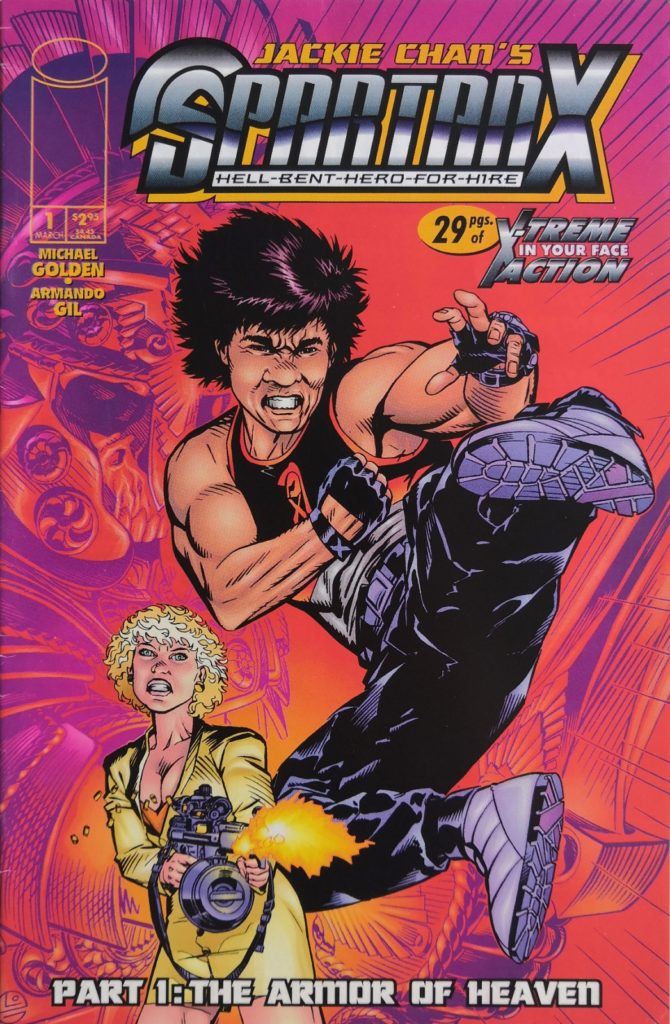



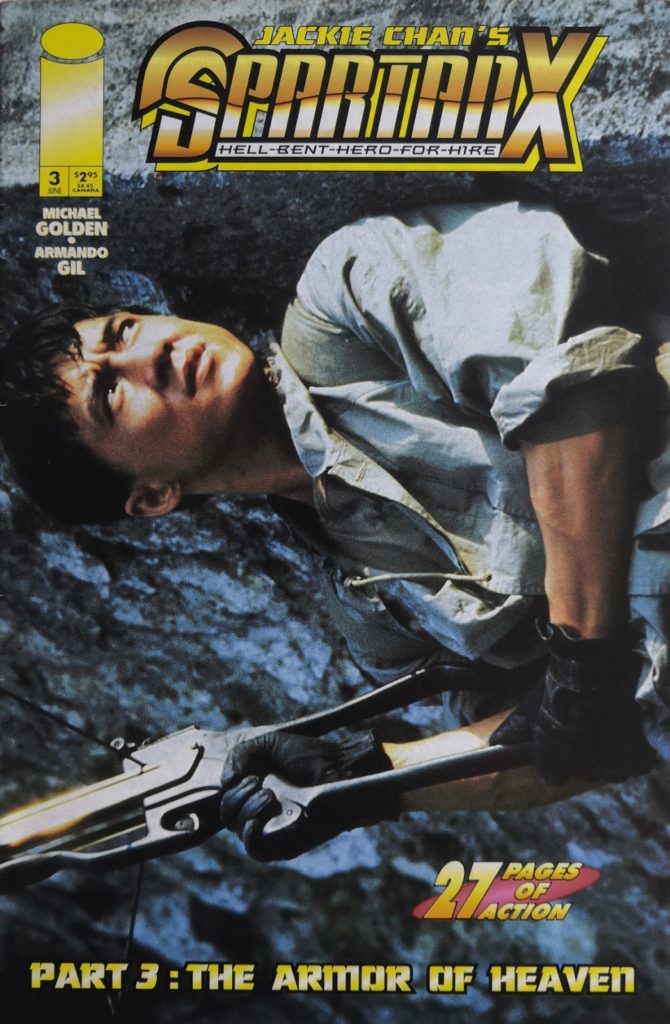
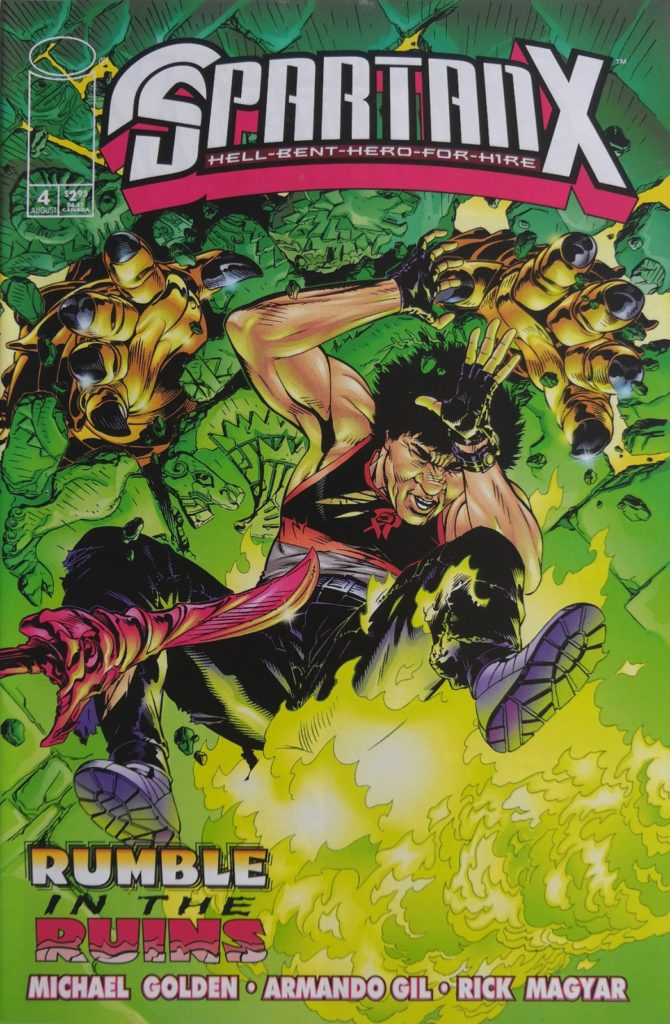
[…] Even before “Jackie Chan Adventures” (2000-2005) was discussed, the makers behind the famous “Spartan X” comics wanted to produce a TV adaptation for children’s programs. The adventures of Spartan X, Jackie Chan, were supposed to put the main character in the most impossible situations that the nimble animation hero could only get out of thanks to his acrobatics, cunning and kung fu tricks. More about the US comics about Jackie Chan can be found in my article “Jackie Chan’s Spartan X: Official 90s US comic series about Jackie Chan – an overview“. […]